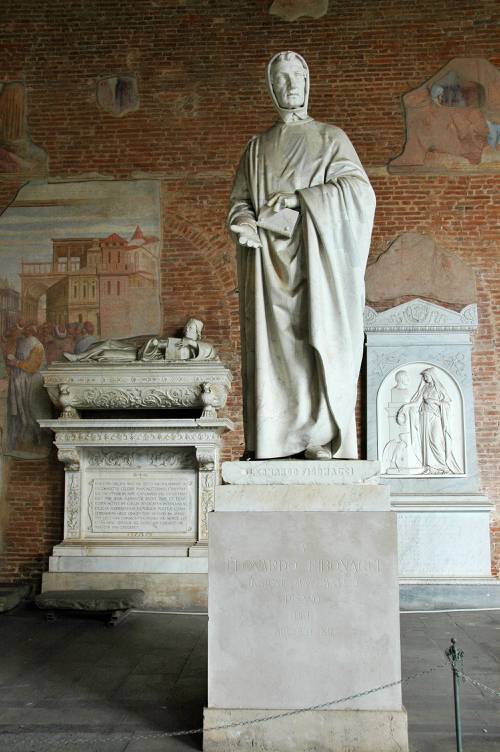
FAQ About Leonardo Fibonacci

Who was Leonardo Fibonacci?
Leonardo Fibonacci, also known as Leonardo of Pisa, was a medieval Italian mathematician born around 1170 in Pisa, Italy. He is famous for introducing the Fibonacci sequence to Western mathematics and for his role in popularizing the Hindu-Arabic numeral system in Europe through his work, Liber Abaci.

What is the Fibonacci sequence?
The Fibonacci sequence is a series of numbers where each number is the sum of the two preceding ones, usually starting with 0 and 1. It goes 0, 1, 1, 2, 3, 5, 8, 13, and so on. This sequence appears in various aspects of art, nature, and mathematics.

What was the significance of Liber Abaci?
Liber Abaci, written by Leonardo Fibonacci in 1202, was significant because it introduced the Hindu-Arabic numeral system to Europe. This system, which includes the digits 0 through 9, is more efficient than the Roman numeral system previously used in Europe, thus revolutionizing European mathematics and commerce.

How did Fibonacci come up with the Fibonacci sequence?
Fibonacci introduced the sequence in his book Liber Abaci. He used it as an example in a problem about rabbit population growth, where he assumed each pair of rabbits produced another pair every month, leading to a growth pattern resembling the sequence.

What fields find applications of the Fibonacci sequence?
The Fibonacci sequence has applications in computer algorithms, financial markets through Fibonacci retracements, biological settings such as phyllotaxis or the arrangement of leaves on a stem, and in the aesthetics of art and architecture, often in the form of the golden ratio.

Did Fibonacci invent the Fibonacci sequence?
Fibonacci did not invent the sequence; it had been previously described in Indian mathematics. However, he was responsible for introducing it to the Western world through his influential book, Liber Abaci.

What is the connection between the Fibonacci sequence and the golden ratio?
As the Fibonacci sequence progresses, the ratio of successive Fibonacci numbers approximates the golden ratio, approximately 1.61803398875. This ratio is often denoted by the Greek letter phi (φ) and is present in various natural and artistic proportions.

How did the introduction of the Hindu-Arabic numeral system impact Europe?
The introduction of the Hindu-Arabic numeral system allowed for easier and more accurate calculations, paving the way for advancements in science, finance, and technology in Europe. This system's simplicity over the Roman numeral system made arithmetic operations more accessible and practical.

Where did Fibonacci learn about Hindu-Arabic numerals?
Fibonacci learned about the Hindu-Arabic numeral system while traveling in North Africa with his merchant father. His exposure to different cultures and their mathematical systems significantly influenced his work and the subsequent introduction of these numerals to Europe.

What was the impact of Fibonacci's work on mathematics and trade?
Fibonacci's introduction of the Hindu-Arabic numeral system via his work, Liber Abaci, greatly simplified arithmetic for trade and business. This facilitated more complex financial calculations and bookkeeping, significantly impacting trade practices and economic development in Europe.

Why is Fibonacci sometimes called 'Leonardo of Pisa'?
Fibonacci is called 'Leonardo of Pisa' because he was born in Pisa, Italy. During his time, it was common to be referred to by one's birthplace, especially for individuals who traveled widely or became known beyond their local region.

Is the Fibonacci sequence used in modern biology?
Yes, the Fibonacci sequence appears in modern biology, particularly in the study of phyllotaxis, the arrangement of leaves on a plant stem, which often follows a spiral pattern consistent with Fibonacci numbers. It is also observed in the branching of trees, the arrangement of seeds in fruit, and other natural phenomena.

How has Fibonacci's work been received over time?
Fibonacci's work, particularly Liber Abaci, was not immediately adopted widely, but over time it gained acceptance and greatly influenced Western mathematics. The Fibonacci sequence he introduced found applications in numerous fields, extending his influence far beyond the medieval period.

What is a common misconception about the Fibonacci sequence?
A common misconception is that the Fibonacci sequence describes all occurrences in nature perfectly; however, while it often appears in natural patterns and structures, not all patterns strictly adhere to the sequence. It provides a useful approximation rather than a strict prediction model.

What are some notable examples of Fibonacci numbers in nature?
Fibonacci numbers appear in various natural phenomena, including the arrangement of leaves around a stem, the pattern of florets in a sunflower, the branching of trees, and the spiral shells of snails and nautilus. These occurrences illustrate the sequence’s role in optimal packing and growth patterns in nature.

Are there other sequences similar to the Fibonacci sequence?
Yes, there are other sequences similar to the Fibonacci sequence. One example is the Lucas sequence, which also begins with two terms and each subsequent term is the sum of the two preceding terms, but starts with 2 and 1. The general concept of such recursive sequences extends to many forms in mathematics.

How is the Fibonacci sequence used in computing?
In computing, the Fibonacci sequence is used in algorithms and data structures. Fibonacci numbers can optimize algorithms for sorting and searching, and they serve as a basis for certain recursive algorithms that can efficiently break down complex problems.

What is an example of a Fibonacci number puzzle or problem?
A famous problem associated with Fibonacci numbers is the rabbit population problem detailed in Liber Abaci. The problem asks how many pairs of rabbits can be produced in a year from a single pair if every month each pair begets a new pair, becoming productive from the second month onwards.

Can Fibonacci numbers be used in financial markets?
Yes, Fibonacci numbers and ratios derived from them are used in financial markets for technical analysis. Traders use Fibonacci retracement levels to predict potential support and resistance levels, identifying trends and making trading decisions based on these mathematical principles.

Did Fibonacci have other interests besides mathematics?
Although Fibonacci is best known for his mathematical contributions, details about his other interests are scarce. His works primarily focus on mathematics, so any additional interests outside of this field remain largely speculative and unrecorded in historical documents.
